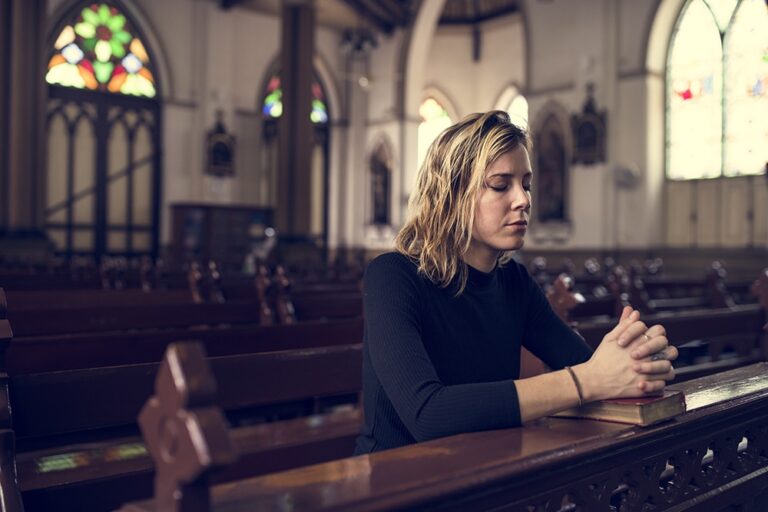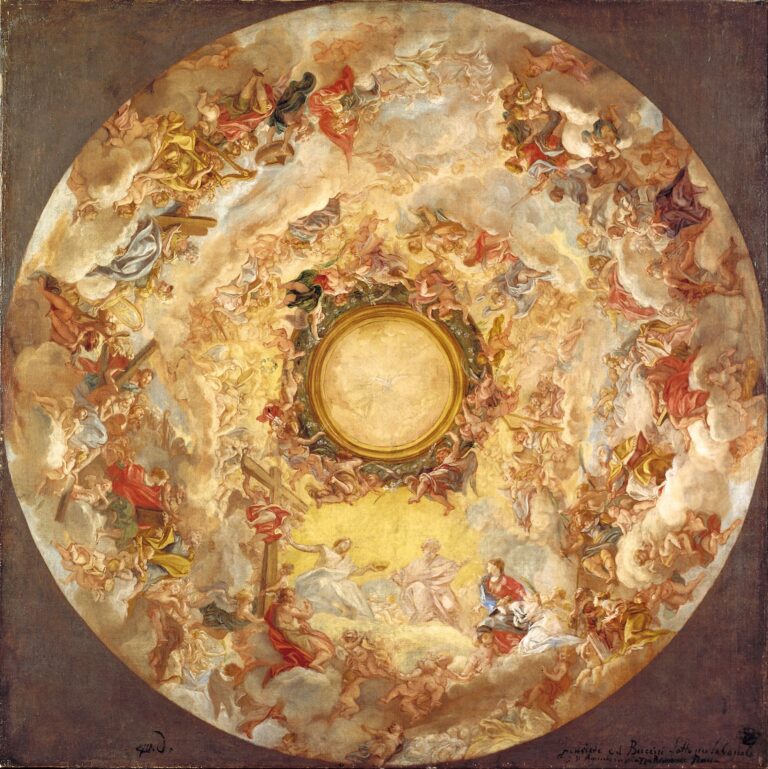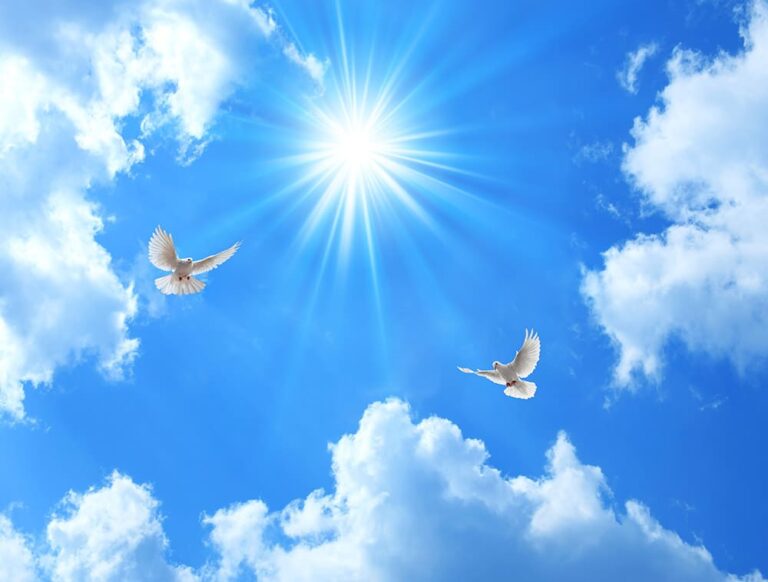Amid all the recent shutdowns of public spaces, there is a term you might be hearing frequently: unprecedented. Although this situation is an unprecedented pandemic with unprecedented actions taken to safeguard everyone’s health, providing many of us an unprecedented stay-cation, the reality is that nothing is truly unprecedented in the history of the Church. With limitations on worship, it can be challenging to feel connected in our spiritual journey and uncertain about how to deepen our relationship with God while remaining at home. Fortunately, the Church provides examples for us through her saints, particularly those who embraced an eremitic way of life.
What does eremite refer to? It’s not a pale weasel (that’s an ermine), but an alternative term for a hermit, an individual who retreats from society to focus on prayer and penance. Numerous biblical instances of hermits exist, including John the Baptist and Elijah, along with early saints like St. Anthony of Egypt, who resided in the desert to listen for God’s voice. Some inhabited caves or small shelters; others, like St. Simeon Stylites, perched atop columns; while figures such as Julian of Norwich occupied solitary rooms attached to a parish church.
The individuals in this final category were referred to as anchorites, as upon entering the space, the anchorite (or anchoress, if female) made a vow of permanence, committing to stay rooted in that location. This may resonate with the numerous limitations set by the crisis. A certain priest formulated guidelines for anchoresses in medieval England, titled Ancrene Riwle. Although not every aspect of the rule may be beneficial for our time spent at home today, there are several lessons we can glean from the lifestyles of these sacred women. Here is your roadmap to embracing the role of a contemporary anchorite during the coronavirus outbreak.
A saintly companion
Icon of St. Simeon Stylites. Public domain
St. Simeon Stylites (390-459) was known for being a little extreme. He originally entered a monastery, but his fellow monks thought that his penances were too hard for their way of life. He then spent three years in a hut before moving his hermitage to a platform atop a 59-foot pillar. Talk about social distancing! People used to gather at the foot of his pillar to seek his advice and listen to his preaching. He also wrote letters to various people, offering his prayers and guidance.
Prayer: St. Simeon Stylites, you sought God atop a pillar separated from the world. Help me in this time of isolation to turn ever more to God and trust that he will show me the way in these uncertain times. Amen.
Source: OSV’s Encyclopedia of Saints
1. Set a schedule
One of the toughest elements of the pandemic is the unpredictability and the alterations it introduces to everyday life. Although we may be unaware of when these changes will conclude, one approach to tackle uncertainty is to create a consistent schedule for work or school along with moments for prayer. The Riwle offers a demanding schedule of prayers during the day, beginning with dressing in the morning, continuing through midafternoon, and concluding before sleep at night. Although you may not pray as often as a hermit, choose when and how you intend to dedicate your day to God. You might take the opportunity at home to experiment with a new prayer method, such as journaling or lectio divina.
2. Let the cow remain outdoors
One of the paths in the Riwle states that if the anchoress maintains pets, apart from a cat, they ought to be housed outside of her confined area. We are aware, through human experience, that if a prohibition exists, it likely stemmed from something that was indeed practiced previously. Regardless, tend to any animals you possess, and be mindful of the distractions you permit within your prayer space. Setting phones to silent during prayer (or to a moo ringtone) serves as a reminder to keep disturbances and cows away from the area designated for God.
3. Plenty of windows
A segment of the guidelines for these anchoresses outlines how their living quarters ought to be arranged, ensuring there are ample windows to welcome sunlight, to have a view of the nearby church for observing Mass, and to interact with individuals who seek counsel. Although renovating your space may not be feasible, the intention behind the anchoress’ windows is something to embody. Ensure that you have sunlight exposure, crucial for vitamin D, and utilize your device’s screen to watch Mass and adoration online while connecting with friends who might be feeling isolated.
4. Concentrate on your five senses
While we are observing social distancing, it’s beneficial to reflect on the blessings we possess in our bodies and express gratitude to God for our five senses. Consider how your senses might draw you nearer to God, or alternatively, how they might present temptations. Do you have depictions of Christ that remind you of his love, or do you find yourself endlessly scrolling through social media, longing to be elsewhere? Do you engage with music and podcasts that highlight God’s goodness, or do they lead you to feel fear? During Lent, contemplate the sensations Christ encountered during the Passion: the tears brimming in his eyes, the clamor of the crowd, the gritty taste of dirt in his mouth as he collapsed under the burden of the cross. How might you utilize your senses for his glory?
5. Fasting
When we are already sacrificing numerous fundamental human interactions, it seems peculiar to include fasting among those sacrifices. Aren’t we surrendering sufficient already? These sacred recluses understood that fasting separates us from worldly matters and heightens our longing for heavenly treasures. Fasting might be as effortless as viewing one fewer Netflix episode and utilizing that time to delve into a Scripture passage instead.
6. Notice nature
Regardless of whether you are situated nearer to bears than to humans or residing in a high-rise apartment, make the most of this period away from routine to appreciate the splendor of the natural environment. The Riwle observations of nature reveal insights into God’s care for us and how our souls ought to depend on Him. Birds ascend into the sky, symbolizing how we should focus our thoughts on God, particularly during these uncertain moments. A bird with its wings extended creates a cross, serving as a reminder that we partake in Christ’s cross amid our afflictions. What natural wonders do you observe, and how might you find reminders of God within them?
7. Read
The Riwle states, “Reading is a valuable form of prayer. Reading instructs us on how and why we should pray.” Seize this moment to deepen your understanding of the Faith, both on a personal level and within your family. Finding the right words for prayer might be challenging, yet the Book of Psalms offers numerous verses that may resonate with your emotions. Seek out an easy-to-understand Bible study, or let one of your inquiries about the Faith guide you in selecting your next book. When it comes to family reading sessions, the tales of the saints provide engaging stories that cater to all interests.
8. Choose a guardian saint
Choosing a patron saint for taking time off work or school may seem unusual, but it originates from the traditions of these anchoritic women. When a woman sequestered herself in her chamber, she adopted the name of the church she resided in to express her devotion to God. Although you need not relinquish your name due to the coronavirus, selecting a patron saint (possibly an anchorite or hermit) strengthens our celestial connections and offers additional prayers for the upcoming days.
9. Pastimes of assistance
Taking up hobbies is not a novel concept, but women in cloistered settings offer us a new perspective on it. They crafted garments to be donated to those in need or shared their meals with the less fortunate who visited them. Get imaginative and consider acquiring a new ability to assist the underprivileged. Numerous organizations provide guidelines on creating footwear, apparel, and various items for children in need using everyday household materials.
Regardless of how you choose to utilize your time at home, remember that you are not solitary in your spiritual path, and there are numerous saints who have deepened their relationship with God within the confines of just one room.
Amy Marter is an alumna of Christendom College and a graduate student at The Catholic University of America.
Quotes from Ancrene Wisse
“You should look into yourself and see what sins of your own are yet to amend. You should sometimes consider the pain of hell, that you may abhor them, and flee the more resolutely from them. You should look, in spirit, to the blessedness of heaven, in order to kindle in your heart the desire to hasten thither.” — No. 63
“The remedy for indolence is spiritual joy, and the consolation of joyful hope from reading and from holy meditation, or when spoken by the mouth of man. Often, dear sisters, you ought to pray less, that you may read more. Reading is good prayer. Reading teacheth how, and for what, we ought to pray; and prayer afterwards obtaineth it. In reading, when the heart feels delight, devotion ariseth, and that is worth many prayers.” — No. 169
“What is a pure heart? I have told you before: it is that you neither desire nor love any thing but God only, and those things, for God, that assist you to come to him.” — No. 208



























